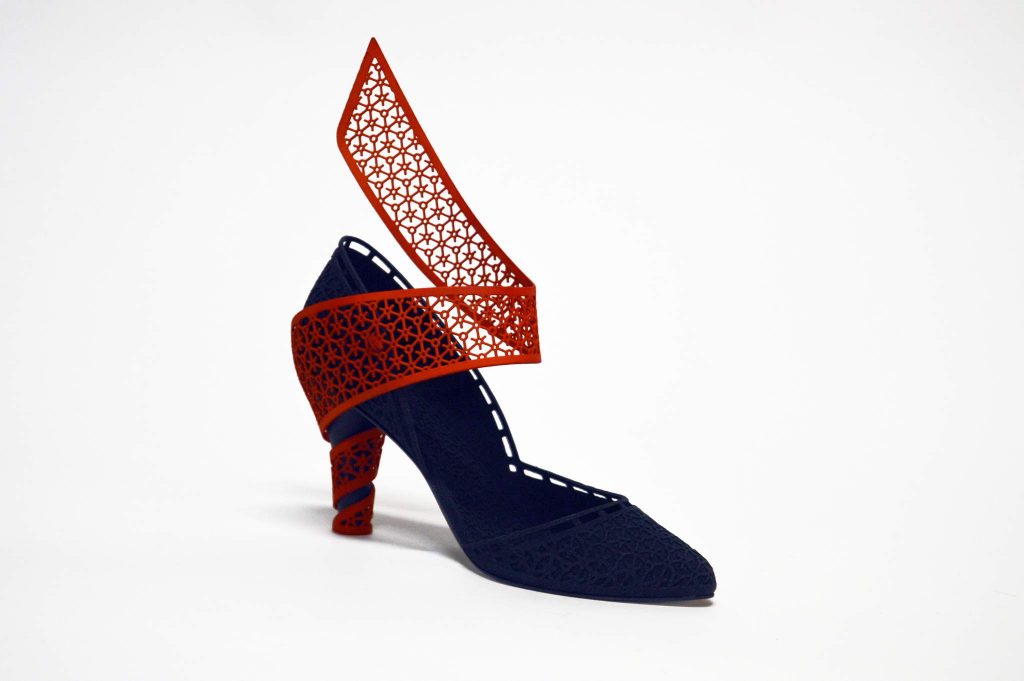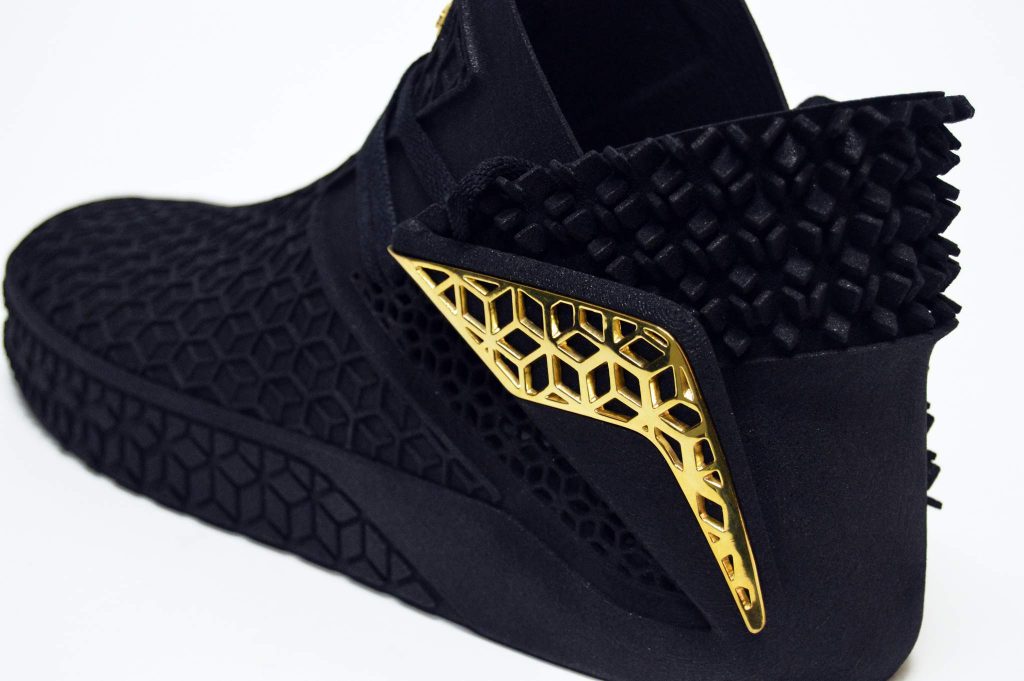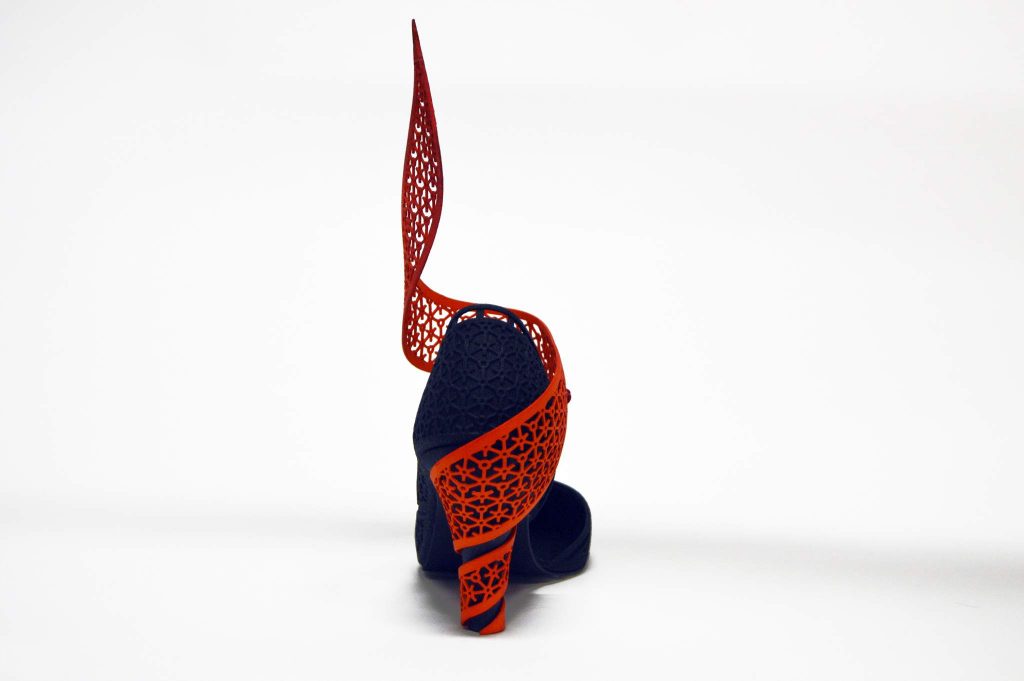3D printing shoes has received plenty of press recently. In the past weeks alone, Carbon has announced remarkable plans for a partnership with adidas that will produce tens of millions of 3D printed shoes, and Wiivv are breaking records on Kickstarter – again using 3D printing.
We caught up with Amadou ba Ndiaye to learn more about another project that combines 3D printing and footwear. Amadou ba Ndiaye is an industrial designer based in Montréal, Canada and is working on a project with the goal, “to explore the potential of 3D printing in the shoe industry and to demonstrate that it can be a reliable way to produce entirely a shoe and not just partially as it is the case nowadays.”
As a designer, I tried this experience myself last year. The results of this experience are the shoes that you see in the images attached.
I asked Ndiaye to explain how the shoes were designed. “This project is called Genesis project and it’s an attempt to explore the potential of 3D printing in the shoe industry,” the designer explains. Continuing Ndiaye adds, “Several directions were thought out during the brainstorming phase, before opting for the final design. Then, came the development stage, which consisted of 3D feet scanning in order to get the exact measurements. Finally, I proceeded to CAD modeling in order to achieve the final design, which will be printed.”

The process of 3D printing a shoe
Ndiaye has worked with several 3D printing technologies but, “for the Genesis Project, I’ve opted for the SLS. Even though it is still pricy, compared to other methods such as the FDM, it offers a great level of precision and resolution, and prints durable parts which can be directly used by the consumer.”
Explaining how the 3D printed shoes were made, Ndiaye says
Despite its complexity, the final concept was printed in TPU – a durable and fully-flexible thermoplastic – as a single part. Therefore, no assembly was required. The part in gold is also based on 3D printing (printing of the part in wax, then manufacturing done with lost wax casting) and was attached to the rest of the shoe. It is completely removable and replaceable, in order to customize the shoe based on the consumer’s preferences.
Providing future details on the fabrication process Ndiaye adds, “The women’s high-heel shoes were printed in 3 steps. The heel and the red part are in PA 2200, and the upper part is in TPU. The upper part and the heel were then glued together, but the red part is removable so that the design can be customized.”

The future of 3D printed footwear
Looking to the future of the project, Ndiaye say the process can now be scaled up,
That was not the case if we go back ten years ago, because the performance was not there yet, the 3d printers on the market were expensive and not productive enough. But with the arrival of new competitors and new technologies on the market it become more and more legitimate to imagine a production process where a shoe company produce shoes on demand. And when we look at all the constraints related to a conventional shoe making process, 3d printing make a lot of sense.
These constraints and the advantages of 3D printing are multiple according the designer, and Ndiaye describes them to me in detail.
“Aesthetically speaking, 3D printing offers creative designs, but also a precision and attention to details unrivaled in this sector,” says Ndiaye. Furthermore, “The designer has all the latitude to produce his design (with few technical restrictions). Therefore, he can come up with innovative shapes and styles.”
This means that, “development and the design time is greatly reduced in comparison to current methods. In certain cases, the development is done in a couple of hours instead of months.” The time saving enabled by 3D printing comes about because, “It is no longer necessary to use moulds for the production process.” Also 3D printing, “offers more flexibility when it comes to the production process [and] It is no longer necessary to have an inventory, since the product is done on demand, based on client’s specifications.”
Since the shoes usually have to be made in all foot sizes, 3D printing also minimize risks pertaining to inventory management. 3D printing also allows the production of unique model or in limited edition and customize them, while keeping production cost at a reasonable level and saving time.

3D printing to unleash creativity
Working with 3D printing means Ndiaye can, “unleash all your creativity without almost any constraints.” Having used the technology since 2008 Ndiaye remembers when, “the 3D printers were slow, expensive and not productive.” At the time Ndiaye, “thought maybe the transition from rapid prototyping to rapid manufacturing will happen when I turn 50 or 60 years old ….. Things changed so fast (especially after the patent expiry in this field) that this transition might happen a lot sooner than I thought.”
We’re now printing cars, houses, jet engines parts etc…. and those parts are not for prototyping purposes, they’re final parts directly used by the end consumers. I think it’s a really exciting period for this industry.
As of yet the 3D printed shoes made by Ndiaye are a proof of concept. However, we’ll be keeping a close eye on the designer and hope to get our hands on a pair of the shoes even!


Don’t forget to place your votes in the 3D Printing Industry Awards, and if you’d like to attend the event tickets are available here.
For the latest 3D scanning news, sign up to our newsletter and follow us on twitter.
Featured image shows a pair of 3D printed shoes from the Genesis project. Photo by Amadou ba Ndiaye.



